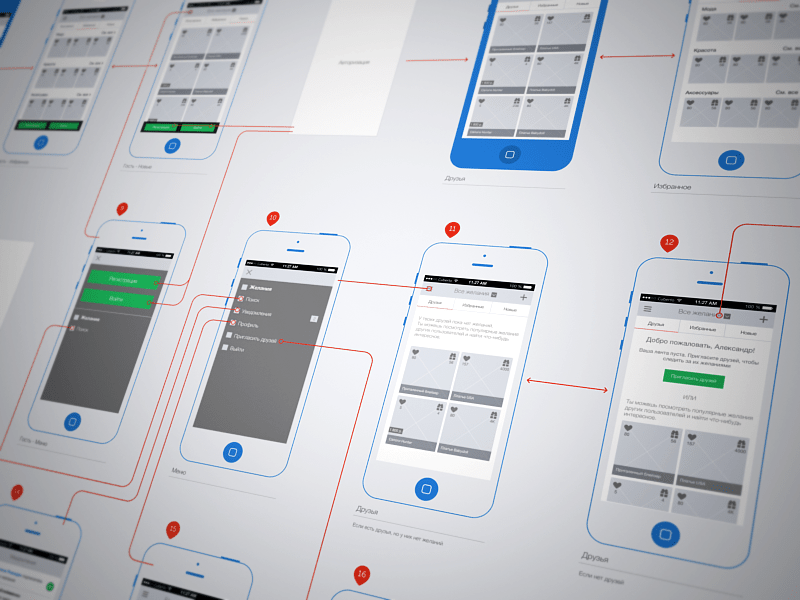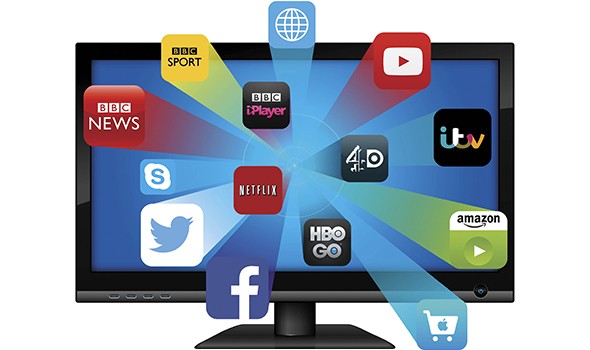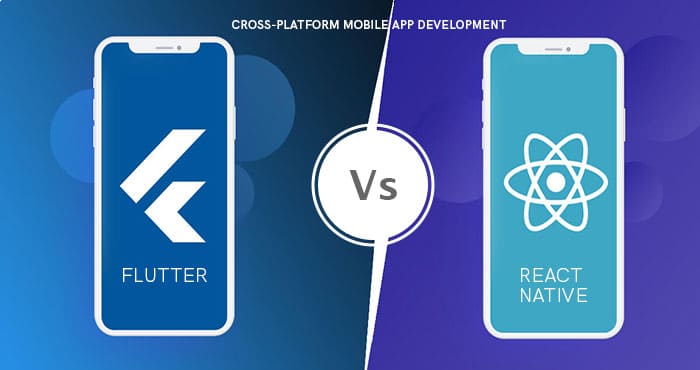Mobile app development works like well-oiled machinery, with user feedback as its crucial cog! It is that bridge that brings developers and users together. The feedback they share provides valuable insights into the needs and preferences of the users. With this tool in your arsenal, you can boost the user experience, or UX, of mobile apps.
But collecting user feedback on time and implementing it is a challenge faced by development projects. It is essential to understand how user feedback can be used to enhance the app’s design and improve user engagement.
In this blog, we will dwell on the importance of user feedback in mobile app development. We will also highlight app platforms like iOS, Android, & cross-platforms and ways to collect user feedback from them.
Thus, it is an important read for business owners, mobile app developers, and UI/UX designers. We hope that this blog helps you tap into the potential of user feedback!
Summary
The power of user feedback can be seen evidently in case studies of Instagram, Slack, and Airbnb. All three are leaders in their industries, and it is because they are ready to listen and keep communication with their users open.
Using the user feedback also saves you the trouble of budget extensions, deadline misses, and embarrassment for the brand!
A few facts
- 95% of the customers read reviews online before making a purchase.
- 49% of customers trust the online reviews like a personal recommendation.
- Positive reviews can boost customers’ spending by 31%.
- 85% of users prefer an app with better UX.
Understanding User Feedback and its Impact on Mobile App Development
User feedback is the sum of all the information shared by the user related to their personal experiences with a mobile app. This feedback is shared in various forms, such as ratings on the app stores, social media comments, or an in-app survey response!
Its impact is intense! Here is how you can influence the user feedback process:
- UX or User Experience:
It is the easiest expression of user interaction with a mobile app. It brings out possible improvement areas and the things that are liked by the users.
- App Design:
App design is guided by the designer and the client, but it misses out on the experiences of its actual users. With user feedback, apps can become the seamless experience users want them to be!
- Development Priorities:
When you take user feedback into consideration, the development process needs alterations to accommodate the availability of resources, timeline extensions, and more.
- User Engagement:
You can openly interact with users to create a community of dedicated and passionate users who just want the app to be its best possible version. It leads to loyalty and increased user retention rates.
Thus, understanding user feedback and its impact is the first milestone in using it for the betterment of mobile app development.
Why is User Feedback Crucial for App Success?
User feedback is crucial for app success as it brings out the pros and cons of an app, which a tester might not find because they are not using the app for themselves.
If mobile app developers inculcate this feedback into their mobile apps, they can drastically improve the UX. This will lead to higher ratings for the app in the app stores.
Let us discuss negative feedback, as it is not easy to take in and comprehend. But it is the purest form of a user’s request to better their life by bettering the app. If paid heed to, then negative feedback can help remove almost all possible drawbacks in the app.
Thus, user feedback is not a tool for improvement but a vital stage in the mobile app development process that ensures app success.
Methods to collect User feedback
Now that we know the importance of user feedback, let’s dwell on the methods that can be used to collect this golden data. The methods used depend on the type of feedback and the app’s development stage.
Some commonly used methods are surveys, user reviews & ratings, in-app feedback, and real-time feedback tools. Each method has its own pros and cons.
1. Surveys and Questionnaires
The most popular methods of collecting user feedback are surveys and questionnaires. They can be modulated to gather specific information regarding the UX of the app. They are used to collect the satisfaction level of the app and any comments on its features and functionalities.
But you have to keep the surveys short! This ensures that users will take some time out of their busy lives to share their opinions about the app.
2. In-App Feedback Forms
In-app forms to collect feedback are also a good option. They can be integrated directly into the app, making the user feedback collection process easier. These can be used to gather information about various stages of the in-app user journey, maybe after task completion or milestone completion.
They should be non-interfering and user-friendly. Thus, they are not messing with the UX itself!
3. User Reviews and Ratings
User reviews & ratings are that valuable feedback’s source that is visible to all. It provides information about the overall UX of the app, highlighting the weaknesses and strengths of the app. They can also share possible suggestions for feature improvement or a new feature altogether.
Thus, they should be regularly monitored and reverted to! This generates a sense of care in users who feel their voices are being heard.
4. Real-Time Feedback Tools
This is the best feedback collection option because it happens in real-time. They have to be integrated with the app. It helps in quick resolution of bugs, understanding the way users interact with the apps, and more.
But these tools should only be used along with the above-mentioned feedback collection methods to ensure all around coverage. Thus, you can select the best possible combination for your mobile app development accordingly.
Analyzing & Implementing User Feedback
Now that you know user feedback and its collection methods, let us dwell on its analyzation and implementation. You will have to sort through the feedback and pinpoint the key issues and themes; try finding a pattern in them.
- Are there any consistent issues or praises?
- Any common issues or praises?
- Any unique issues or praises?
The feedback should be segregated accordingly. Now, you can set up a priority checklist to tackle them;
- High Priority
Those issues that affect UX and/or app functionality significantly!
- Medium Priority
Suggestions about possible improvements in a current feature or a new feature.
- Low Priority
Minor issues that can be taken into consideration in the future!
Now that you have charted out a feedback priority checklist, you can easily work on it by adding it to your project timelines. Do not forget to share the updates with the users, and this instils faith and loyalty!
Prioritizing Feedback for the Development Process
You cannot undergo the development process again and again. Thus, keeping developmental changes as received in user feedback on top priority is a must! Factors to consider include the impact on UX, feasibility of the feedback implementation, and overall alignment with the app’s visions & goals.
Also, ensure that the process of prioritizing is transparent, involving all the stakeholders and the developer team. This way, you save yourself the extra explanation that each connected department would need.
The Feedback Loop: Mobile App Design
This loop refers to the continuous circle of collection, analyzation and implementation of user feedback. It is repeated on and on in the mobile app development life cycle. It guarantees the evolution of the app for better UX.
Plus, the integration of the feedback loop into mobile app design makes the app more user-centric. Or shall we say that the app gets developed by keeping users at the center and optimizing the app for their benefit & satisfaction.
Enhancing User Experience via Feedback
User experience helps in collecting user feedback, and if it is not used for improving the UX, then there would be no point in monitoring UX in the first place. This can be very discouraging to the enthusiastic users.
By incorporating their feedback, you value their contributions and change the app for the better. These changes in app design, functionality, or features are beneficial for both the users and the brand that is represented by the app.
Apps have to meet user expectations. With user feedback, you achieve that while validating the effectiveness of a new feature. With it, you can create mobile apps that exceed user expectations.
User Engagement & Retention via User Feedback
It is the most powerful tool in a development team’s arsenal that has a direct impact on user retention and engagement. By giving your users a chance to have a say in the development process, you make them feel like a part of your extended team.
You have to know what features are working and which are a hassle. This is the best possible information that a developer team can get, as it helps them complete the development in one go.
You can also use user feedback to understand behavioural patterns and preferences. This helps in creating an app that has been designed for them in a way that they like. In short, user feedback helps in building long-lasting relationships with loyal users, which will come in handy later as beta testers!
Case Studies: Success Stories of Feedback in App Development
Just in case you need further proof of the usefulness of user feedback, we have curated some case studies that portray the power of user feedback!
There are numerous examples of how user feedback has led to significant improvements in mobile apps. Let’s look at a few case studies that highlight the power of user feedback in app development.
Did you know it was called Burbn?
It used to allow users to post pictures, check in, and earn points. But the developers found out via user feedback that,
- Users love the photo-sharing option.
- Users found other features pointless.
Result: The Instagram app, which is focused on sharing photos!
Slack
They are known for their inculcation of user feedback. They have a dedicated team to review user feedback and communicate with them.
Result: Slack has high user satisfaction and resolves bugs & improves features promptly!
Airbnb
Early user feedback helped Airbnb understand the importance of top-quality photos.
Result: They launched free professional photography for their stays, and this improved the UX and bookings.
We hope that there is no doubt left in your mind regarding the importance of user feedback in mobile app development.
Best Practices: User Feedback
There are five best practices that can help you manage user feedback appropriately! They are,
- Make it easier for the user to share their feedback.
- Analyze and prioritize the feedback.
- Respond immediately and professionally.
- Use the feedback to improve your mobile app development process.
- Keep reviewing and analyzing the user feedback to become better!
Keep these 5 best practices in mind whenever developing an app or getting it developed! You can also encourage user feedback with some freebies.
Conclusion: Building a Better Mobile App with User Feedback
User feedback is key to cracking the bubble of successful mobile app development and getting your app ranked at the top of the app stores. With it, you will build a better app and a fan following of users who will be happy to help you for free! This will save you some money by using this community as beta testers and earn you the title of a caring business venture!
Wildnet Technologies is one of the best mobile app development company in Noida. We have built ourselves from the ground up during our 17-year-long journey. We understand and use the power of user feedback to develop the best possible mobile apps.
We have till now catered to 400+ clients and developed 2100+ projects for them, which include 1150+ websites and 849+ apps. We are able to achieve this feat through our 350+ developer experts, who have more than 5 years of experience. We deliver happy moments through our Design and Development services.
If you would like to know more,
> App Maintenance & Updates in 2024: Update of Phase Out!
> The Cost of Mobile App Development in 2024
> Wildnet’s Digital Yum (our weekly newsletter from our thought leadership)
Reach out to us now at info@wildnettechnologies.com and let us create the mobile app of users’ dreams!
FAQs
FAQ 1. Why is feedback important in app development?
Ans: Because without user feedback, the app that is supposed to help users becomes irrelevant for them.
FAQ 2. What are the benefits of in app feedback?
Ans: The benefits of in-app feedback are infinite. But some notable ones are:
- A great mobile app, and
- A community of loyal users!
FAQ 3. What is the importance of usability in mobile application?
Ans: The usability of a mobile application defines the number of downloads, rating on the app store, and opportunities to scale. Thus, usability is quite important!
FAQ 4. How important is user feedback?
Ans: Without user feedback, the development team is trying to hit their target, i.e., business and development goals, in pitch black. This would be a waste of time, energy, and money spent on the mobile app development process.
FAQ 5. Why is feedback important for development?
Ans: Development is the process of creating something new. It involves experimentation and rigorous testing. Feedback helps in checking the legitimacy of the development process as a whole!







